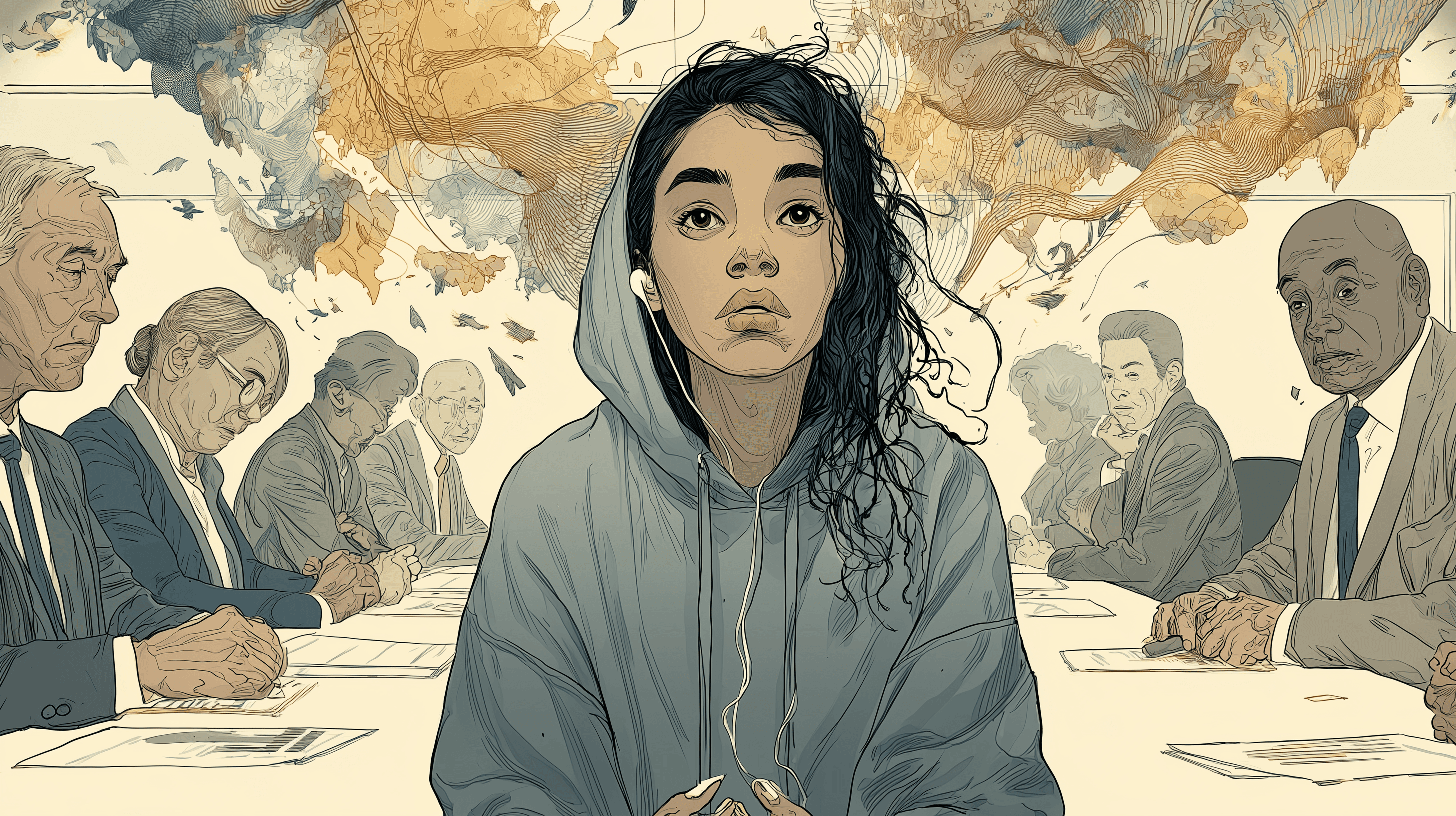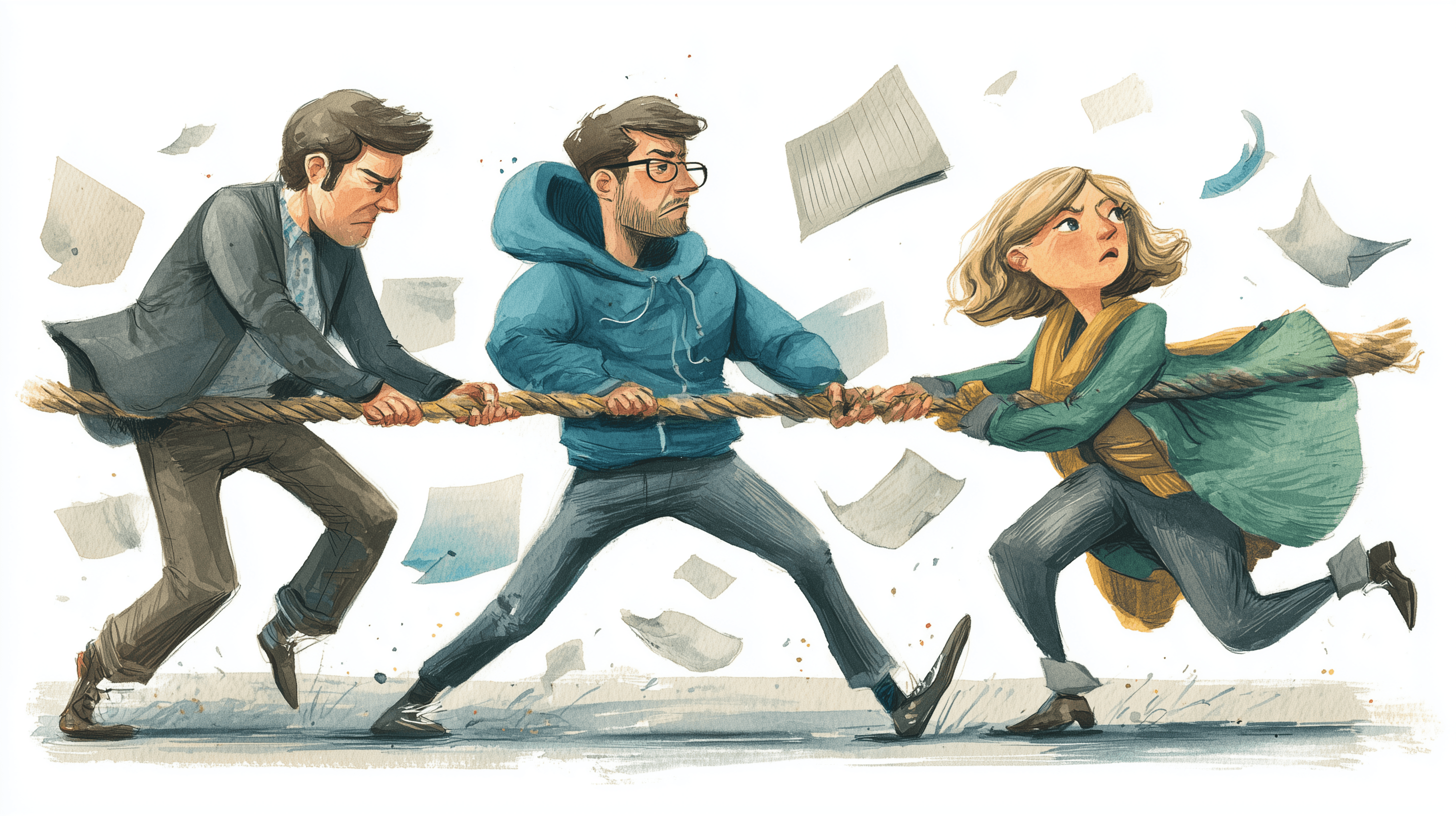My Philosophy
"I believe the best experience leaders don’t just ship products, they shape organizations."
Design isn’t decoration. It’s leverage.
The best design work I've done wasn't about making things pretty. It was watching a Starbucks vendor cry with relief when we automated weeks of manual work into an hour. Building products for Deaf and hard-of-hearing communities where accessibility wasn't a checkbox but the entire point. Seeing security analysts finally focus on real threats instead of drowning in false positives.
What drives me is solving real problems for real people in ways you can measure. Design becomes leverage when it's embedded into strategy from day one, when research shapes decisions instead of validating them, and when accessibility creates competitive advantage instead of compliance friction.
Here's what I believe about how design actually works:
Design isn’t decoration. It’s leverage.
The best design work I've done wasn't about making things pretty. It was watching a Starbucks vendor cry with relief when we automated weeks of manual work into an hour. Building products for Deaf and hard-of-hearing communities where accessibility wasn't a checkbox but the entire point. Seeing security analysts finally focus on real threats instead of drowning in false positives.
What drives me is solving real problems for real people in ways you can measure. Design becomes leverage when it's embedded into strategy from day one, when research shapes decisions instead of validating them, and when accessibility creates competitive advantage instead of compliance friction.
Here's what I believe about how design actually works:
Seven Principles of Design Leadership
1. Mission-Driven Work Produces Better Design
The work that sticks with me isn't the biggest budget or the flashiest launch. It's the moments where design genuinely improved someone's life. I've learned that when you can picture the specific person whose day you're improving, you make better decisions. The stakes become real. Tradeoffs get easier because you know what you're trading off for.
Mission-driven companies attract better talent, retain them longer, and ship work that compounds. I'm interested in roles where the mission is clear and the impact is measurable.
2. Research Isn't Validation, It's Strategy
Good instincts are fine, but validated instincts win. I treat research as a strategic weapon that guides decisions, clarifies priorities, and aligns teams around what actually matters.
When research is baked into planning, businesses stop chasing assumptions and start building with confidence. Every test, every insight, and every iteration increases focus and reduces risk.
3. Accessibility is Competitive Advantage, Not Compliance Burden
I've spent years in regulated industries where accessibility compliance isn't optional. I've learned that treating it as a checkbox creates friction. Treating it as strategy creates advantage.
When accessibility is embedded from the start, products reach more users, legal risk drops, and delivery actually speeds up because you're not retrofitting later. Designing for everyone means building products that reflect real people, not just personas on a slide.
4. Culture Decides Everything
Great work doesn't happen in fear-based cultures. I've worked in organizations where competence was viewed as a threat and others where it was celebrated. The difference in outcomes was night and day.
Empowered teams take ownership, take calculated risks, and deliver results that move the business. Leadership isn't about control, it's about clearing roadblocks so your team can do their best work. Trust sparks ownership, and ownership brings positive results.
5. Stable Leadership Matters More Than People Admit
I've seen what happens when leadership churns every 6-12 months. Priorities constantly change and good work gets undone. Teams burn out proving themselves to each new exec. You can't build systems that work when the goal posts keep moving.
The companies where I've had lasting impact all had one thing in common: leadership stable enough to let work mature and strategy that last long enough to see the results.
"The future of UX blends AI’s efficiency with research-driven clarity."
6. AI is a Tool, Not a Replacement
AI is rewriting the playbook for UX, but it's not a magic wand. I see it as a partner that accelerates workflows, surfaces patterns we'd miss, and enables experimentation at scale. But AI without human judgment is just automation.
The future of UX lives at the intersection where AI handles heavy lifting and human insight ensures the work stays relevant, ethical, and human. My current focus is understanding agentic UX and how to integrate AI without turning designers into prompt monkeys.
7. Mentorship is How You Multiply Impact
Design leadership isn't just about setting direction, it's about shaping people. I believe in guiding teams to think critically, take ownership, and grow into leaders themselves.
Mentorship is a two-way street. I learn as much from my teams as they learn from me. It's about building trust, sharing knowledge, and creating conditions where everyone can do the best work of their careers.
What I'm Looking For
These principles are how I evaluate every opportunity and the standards that I hold myself to.
I'm seeking VP or Head of Design roles at mission-driven companies where:
Design has strategic influence, not just visual value
Leadership is stable enough to support long-term work
Products make measurable impact for real people
Research drives decisions, not just validates them
Accessibility is viewed as advantage, not burden
If your company aligns with these principles, let's talk.
What I'm Looking For
These principles are how I evaluate every opportunity and the standards that I hold myself to.
I'm seeking VP or Head of Design roles at mission-driven companies where:
Design has strategic influence, not just visual value
Leadership is stable enough to support long-term work
Products make measurable impact for real people
Research drives decisions, not just validates them
Accessibility is viewed as advantage, not burden
If your company aligns with these principles, let's talk.
Insights
I share thoughts on design, leadership, and strategy, all in short takes that connect ideas to real outcomes. Here are a few of my latest pieces:
My Philosophy
"I believe the best experience leaders don’t just ship products, they shape organizations."
Design isn’t decoration. It’s leverage.
The best design work I've done wasn't about making things pretty. It was watching a Starbucks vendor cry with relief when we automated weeks of manual work into an hour. Building products for Deaf and hard-of-hearing communities where accessibility wasn't a checkbox but the entire point. Seeing security analysts finally focus on real threats instead of drowning in false positives.
What drives me is solving real problems for real people in ways you can measure. Design becomes leverage when it's embedded into strategy from day one, when research shapes decisions instead of validating them, and when accessibility creates competitive advantage instead of compliance friction.
Here's what I believe about how design actually works:
Design isn’t decoration. It’s leverage.
The best design work I've done wasn't about making things pretty. It was watching a Starbucks vendor cry with relief when we automated weeks of manual work into an hour. Building products for Deaf and hard-of-hearing communities where accessibility wasn't a checkbox but the entire point. Seeing security analysts finally focus on real threats instead of drowning in false positives.
What drives me is solving real problems for real people in ways you can measure. Design becomes leverage when it's embedded into strategy from day one, when research shapes decisions instead of validating them, and when accessibility creates competitive advantage instead of compliance friction.
Here's what I believe about how design actually works:
Seven Principles of Design Leadership
1. Mission-Driven Work Produces Better Design
The work that sticks with me isn't the biggest budget or the flashiest launch. It's the moments where design genuinely improved someone's life. I've learned that when you can picture the specific person whose day you're improving, you make better decisions. The stakes become real. Tradeoffs get easier because you know what you're trading off for.
Mission-driven companies attract better talent, retain them longer, and ship work that compounds. I'm interested in roles where the mission is clear and the impact is measurable.
2. Research Isn't Validation, It's Strategy
Good instincts are fine, but validated instincts win. I treat research as a strategic weapon that guides decisions, clarifies priorities, and aligns teams around what actually matters.
When research is baked into planning, businesses stop chasing assumptions and start building with confidence. Every test, every insight, and every iteration increases focus and reduces risk.
3. Accessibility is Competitive Advantage, Not Compliance Burden
I've spent years in regulated industries where accessibility compliance isn't optional. I've learned that treating it as a checkbox creates friction. Treating it as strategy creates advantage.
When accessibility is embedded from the start, products reach more users, legal risk drops, and delivery actually speeds up because you're not retrofitting later. Designing for everyone means building products that reflect real people, not just personas on a slide.
4. Culture Decides Everything
Great work doesn't happen in fear-based cultures. I've worked in organizations where competence was viewed as a threat and others where it was celebrated. The difference in outcomes was night and day.
Empowered teams take ownership, take calculated risks, and deliver results that move the business. Leadership isn't about control, it's about clearing roadblocks so your team can do their best work. Trust sparks ownership, and ownership brings positive results.
5. Stable Leadership Matters More Than People Admit
I've seen what happens when leadership churns every 6-12 months. Priorities constantly change and good work gets undone. Teams burn out proving themselves to each new exec. You can't build systems that work when the goal posts keep moving.
The companies where I've had lasting impact all had one thing in common: leadership stable enough to let work mature and strategy that last long enough to see the results.
"The future of UX blends AI’s efficiency with research-driven clarity."
6. AI is a Tool, Not a Replacement
AI is rewriting the playbook for UX, but it's not a magic wand. I see it as a partner that accelerates workflows, surfaces patterns we'd miss, and enables experimentation at scale. But AI without human judgment is just automation.
The future of UX lives at the intersection where AI handles heavy lifting and human insight ensures the work stays relevant, ethical, and human. My current focus is understanding agentic UX and how to integrate AI without turning designers into prompt monkeys.
7. Mentorship is How You Multiply Impact
Design leadership isn't just about setting direction, it's about shaping people. I believe in guiding teams to think critically, take ownership, and grow into leaders themselves.
Mentorship is a two-way street. I learn as much from my teams as they learn from me. It's about building trust, sharing knowledge, and creating conditions where everyone can do the best work of their careers.
What I'm Looking For
These principles are how I evaluate every opportunity and the standards that I hold myself to.
I'm seeking VP or Head of Design roles at mission-driven companies where:
Design has strategic influence, not just visual value
Leadership is stable enough to support long-term work
Products make measurable impact for real people
Research drives decisions, not just validates them
Accessibility is viewed as advantage, not burden
If your company aligns with these principles, let's talk.
What I'm Looking For
These principles are how I evaluate every opportunity and the standards that I hold myself to.
I'm seeking VP or Head of Design roles at mission-driven companies where:
Design has strategic influence, not just visual value
Leadership is stable enough to support long-term work
Products make measurable impact for real people
Research drives decisions, not just validates them
Accessibility is viewed as advantage, not burden
If your company aligns with these principles, let's talk.
Insights
I share thoughts on design, leadership, and strategy, all in short takes that connect ideas to real outcomes. Here are a few of my latest pieces:
My Philosophy
"I believe the best experience leaders don’t just ship products, they shape organizations."
Design isn’t decoration. It’s leverage.
The best design work I've done wasn't about making things pretty. It was watching a Starbucks vendor cry with relief when we automated weeks of manual work into an hour. Building products for Deaf and hard-of-hearing communities where accessibility wasn't a checkbox but the entire point. Seeing security analysts finally focus on real threats instead of drowning in false positives.
What drives me is solving real problems for real people in ways you can measure. Design becomes leverage when it's embedded into strategy from day one, when research shapes decisions instead of validating them, and when accessibility creates competitive advantage instead of compliance friction.
Here's what I believe about how design actually works:
Design isn’t decoration. It’s leverage.
The best design work I've done wasn't about making things pretty. It was watching a Starbucks vendor cry with relief when we automated weeks of manual work into an hour. Building products for Deaf and hard-of-hearing communities where accessibility wasn't a checkbox but the entire point. Seeing security analysts finally focus on real threats instead of drowning in false positives.
What drives me is solving real problems for real people in ways you can measure. Design becomes leverage when it's embedded into strategy from day one, when research shapes decisions instead of validating them, and when accessibility creates competitive advantage instead of compliance friction.
Here's what I believe about how design actually works:
Seven Principles of Design Leadership
1. Mission-Driven Work Produces Better Design
The work that sticks with me isn't the biggest budget or the flashiest launch. It's the moments where design genuinely improved someone's life. I've learned that when you can picture the specific person whose day you're improving, you make better decisions. The stakes become real. Tradeoffs get easier because you know what you're trading off for.
Mission-driven companies attract better talent, retain them longer, and ship work that compounds. I'm interested in roles where the mission is clear and the impact is measurable.
2. Research Isn't Validation, It's Strategy
Good instincts are fine, but validated instincts win. I treat research as a strategic weapon that guides decisions, clarifies priorities, and aligns teams around what actually matters.
When research is baked into planning, businesses stop chasing assumptions and start building with confidence. Every test, every insight, and every iteration increases focus and reduces risk.
3. Accessibility is Competitive Advantage, Not Compliance Burden
I've spent years in regulated industries where accessibility compliance isn't optional. I've learned that treating it as a checkbox creates friction. Treating it as strategy creates advantage.
When accessibility is embedded from the start, products reach more users, legal risk drops, and delivery actually speeds up because you're not retrofitting later. Designing for everyone means building products that reflect real people, not just personas on a slide.
4. Culture Decides Everything
Great work doesn't happen in fear-based cultures. I've worked in organizations where competence was viewed as a threat and others where it was celebrated. The difference in outcomes was night and day.
Empowered teams take ownership, take calculated risks, and deliver results that move the business. Leadership isn't about control, it's about clearing roadblocks so your team can do their best work. Trust sparks ownership, and ownership brings positive results.
5. Stable Leadership Matters More Than People Admit
I've seen what happens when leadership churns every 6-12 months. Priorities constantly change and good work gets undone. Teams burn out proving themselves to each new exec. You can't build systems that work when the goal posts keep moving.
The companies where I've had lasting impact all had one thing in common: leadership stable enough to let work mature and strategy that last long enough to see the results.
"The future of UX blends AI’s efficiency with research-driven clarity."
6. AI is a Tool, Not a Replacement
AI is rewriting the playbook for UX, but it's not a magic wand. I see it as a partner that accelerates workflows, surfaces patterns we'd miss, and enables experimentation at scale. But AI without human judgment is just automation.
The future of UX lives at the intersection where AI handles heavy lifting and human insight ensures the work stays relevant, ethical, and human. My current focus is understanding agentic UX and how to integrate AI without turning designers into prompt monkeys.
7. Mentorship is How You Multiply Impact
Design leadership isn't just about setting direction, it's about shaping people. I believe in guiding teams to think critically, take ownership, and grow into leaders themselves.
Mentorship is a two-way street. I learn as much from my teams as they learn from me. It's about building trust, sharing knowledge, and creating conditions where everyone can do the best work of their careers.
What I'm Looking For
These principles are how I evaluate every opportunity and the standards that I hold myself to.
I'm seeking VP or Head of Design roles at mission-driven companies where:
Design has strategic influence, not just visual value
Leadership is stable enough to support long-term work
Products make measurable impact for real people
Research drives decisions, not just validates them
Accessibility is viewed as advantage, not burden
If your company aligns with these principles, let's talk.
What I'm Looking For
These principles are how I evaluate every opportunity and the standards that I hold myself to.
I'm seeking VP or Head of Design roles at mission-driven companies where:
Design has strategic influence, not just visual value
Leadership is stable enough to support long-term work
Products make measurable impact for real people
Research drives decisions, not just validates them
Accessibility is viewed as advantage, not burden
If your company aligns with these principles, let's talk.
Insights
I share thoughts on design, leadership, and strategy, all in short takes that connect ideas to real outcomes. Here are a few of my latest pieces:


